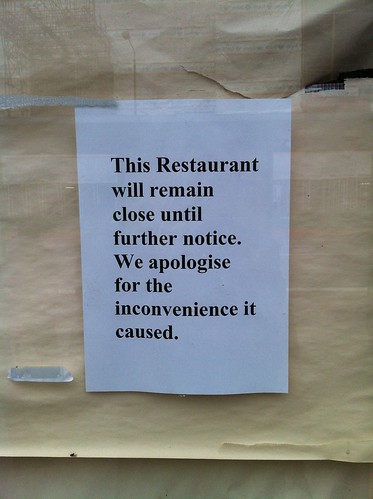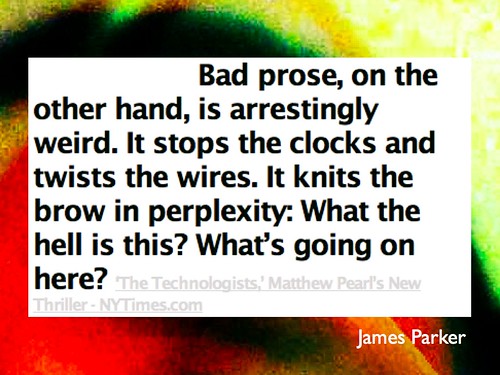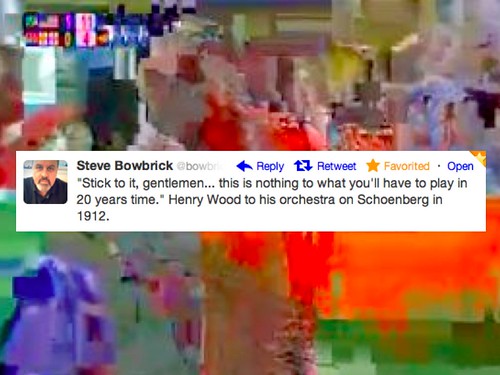UPDATE: James has written about his own talks too.
I was on a panel on Monday, at SXSW. It was called The New Aesthetic: Seeing Like Digital Devices. And it was organised by fellow RIGster James Bridle. People seemed to like it. it was the most fun I've had speaking for ages, partly because I had to make up a whole bunch of new stuff but mostly because I was doing it with Ben, Aaron, James and Joanne.
I tried to talk about the New Aesthetic and writing - about how exciting it might be to do writing with machines in it. I didn't say anything hugely cogent but I think I got away with it via jokes and analogies. (A lot of which you might have seen on here before, it's similar stuff to what'll end up in the Making Magazine talks.)
This was my starting point. On one level it's just a stupid typo, on another it's a brilliant seed for a short story about a sentient restaurant that's trying to stay close to you, and the mystery of the inconvenience it caused. But - most interestingly - it's a story about the meaning created in collaboration, presumably between someone who didn't have English as a first language and Microsoft Word.
And that's the bit that reminded me of Princess Diana saying 'there were three of us in this marriage'. I know that lots of what's great about reading and writing is the direct connection between reader and author, but what's exciting me at the moment is the idea that there's a third party in there too - machines, software, bots.
Impressionism was apparently, at least partly conjured into the life by the invention of paint in tubes - the convenience of which allowed painting go outside. I'm excited by the writing that'll be caused by the invention of different reading and writing technologies. Just as iTunes/iPod enabled Matt's Music For Shuffle.
[ONE OF THOSE WOOLY TRANSITIONS YOU CAN DO IN A TALK BUT WHICH IS HARDER WHILE WRITING]
Something, something, form factor example is the brilliant Autonomous Parapoetic Device;
"The effect is well-known to anyone with an iPod: the serendipitous juxtaposition of sound and place expands and mutates both. The iPod’s shuffle function amplifies the effect: an unexpected song played over a familiar environment brings with it a new (and potentially revelatory) reading...The APxD seeks to approach these issues from a textual point of view. Can words have the same interventionist effect on space that sound has? Of course, a book or a newspaper can be read anywhere. The wrinkle that the APxD introduces is its aleatoric nature: no two glances at the screen are the same; no two encounters between the text and the outside world are the same."
Or the effect you get when you put William Gibson's tweets in a cigar box.
But what's really exciting me right now are the possibilities of collaborating with robots. Because when I look at businesses like Narrative Science I imagine a fiction factory like James Patterson's combined with the gnarly brain-snagging language of Markov chocolates.
Because the way robots write, right now, tickles your brain in exactly the same way that the best bad prose does:
And all these robots Markov-chainsawing their way through literature are a little akin to the procedural aesthetic mayhem being wrought by some merchants on Zazzle - as described in the best article I've read for years.
Those possibilities are exciting. That'd be a great way to write - or to be edited.
I don't know what all this means yet, I think I've figured more out through arguing with James, seeing everyone else present and through thinking about my presentation on Friday. But this quote still seems an appropriate way to end...


